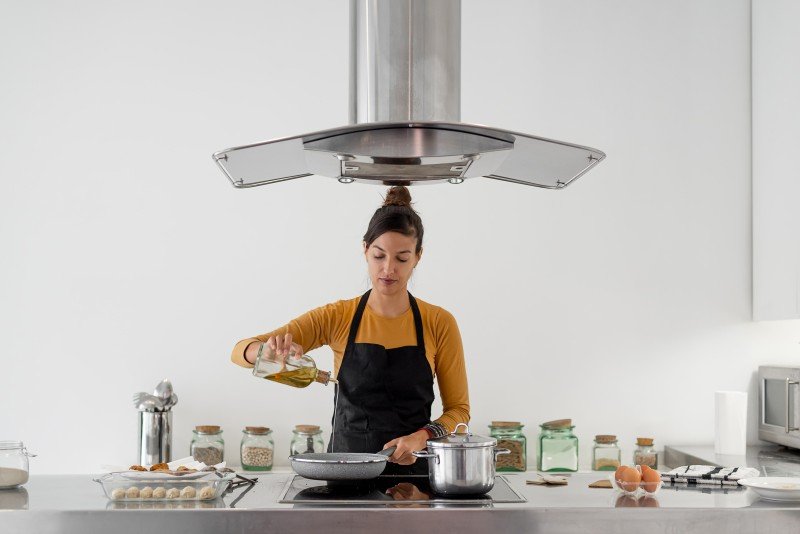Understanding Ovens and Hobs: A Comprehensive Guide
Cooking has actually come a long way given that the days of open flames and primary cooking methods. Today, ovens and hobs are at the heart of contemporary kitchens, offering versatility, efficiency, and a variety of cooking options. Whether you are a beginner cook or a seasoned chef, understanding the differences, functions, and functions of these home appliances is essential for making the most of cooking potential. This post breaks down the various kinds of ovens and hobs readily available on the market, their performances, and how to pick the best appliances for your kitchen.
What is an Oven?
An oven is an enclosed area developed for heating and cooking food, offering different approaches such as baking, roasting, and broiling. Ovens come in various types, each serving distinct cooking choices and requirements.
Kinds of Ovens
Conventional Ovens:
- Use gas or electricity for heating.
- Normally include a heating element at the top and bottom.
- Perfect for basic baking jobs.
Convection Ovens:
- Use a fan to flow hot air, promoting even cooking.
- Appropriate for baking, roasting, and reheating.
- Decreases cooking time and boosts flavor.
Steam Ovens:
- Utilize steam to cook food while retaining wetness and nutrients.
- Exceptional for health-conscious cooking, such as vegetables and fish.
Microwave Ovens:
- Use electro-magnetic radiation to heat food quickly.
- Best for reheating leftovers or cooking simple meals.
Wall Ovens:
- Built into the wall, saving area in the kitchen.
- Readily available in different setups, including single or double ovens.
Key Features of Ovens
- Temperature level Control: Precision heating for various baking and preparing processes.
- Self-Cleaning Options: Some models have self-cleaning modes that use heats to burn off food residue.
- Smart Features: Wi-Fi connection enables remote pre-heating, tracking, and recipe management by means of mobile phones.
What is a Hob?
A hob is a cooking surface area, frequently described as a stove or cooktop, where cookware is positioned for heating. Hobs are offered in different materials, sizes, and heating techniques, dealing with diverse cooking requirements.
Kinds of Hobs
Gas Hobs:
- Utilize burner for direct flame cooking.
- Offer exact temperature control and are favored by lots of expert chefs.
Electric Hobs:
- Use electric coils or smooth tops.
- Some models are equipped with induction technology, providing rapid heating through electro-magnetic energy.
Induction Hobs:
- Cookware needs to be made from magnetic products.
- Extremely energy-efficient, offering quick heat and decreasing burn dangers.
Ceramic Hobs:
- Feature a glass-ceramic surface area with heating aspects beneath.
- Easy to clean but can be less energy-efficient than induction hobs.
Secret Features of Hobs
- Burner Configuration: Varies from two to 6 burners, depending on model and size.
- Power Levels: Multiple settings permit for higher accuracy in cooking.
- Safety Features: Options like flame failure devices and kid lock settings ensure safety during cooking.
Picking the Right Oven and Hob
Choosing the ideal oven and hob for your kitchen includes careful consideration of various elements. Below is a list of questions to guide your choice procedure:
- What is your primary cooking style?
- How much kitchen area do you have?
- What is your budget plan?
- Do you prefer gas or electric appliances?
- Are extra features like clever connectivity crucial to you?
Table Summary of Key Differences Between Ovens and Hobs
| Function | Oven | Hob |
|---|---|---|
| Functions | Baking, roasting, broiling | Boiling, frying, sautéing |
| Cooking Method | Confined heat | Direct cooking surface |
| Temperature Control | Adjustable settings | Stove settings |
| Types | Electric, gas, convection, microwave | Gas, electric, induction, ceramic |
| Cooking Capacity | Larger (can cook multiple dishes) | Smaller (concentrate on instant cooking) |
| Cleaning | Self-cleaning choices offered | Generally manual cleansing required |
Maintenance Tips for Ovens and Hobs
Appropriate care and maintenance of your cooking devices extend their life-span and performance. Here are vital maintenance tips:
Regular Cleaning:
- Clean the oven interior after each usage to prevent residue buildup.
- Clean down hob surfaces after preparing to avoid stains.
Inspect Seals:
- Ensure the oven door seals are intact to maintain energy effectiveness.
- Change worn-out gaskets and seals as required.
Inspect Burners and Elements:
- For gas hobs, look for clogs in burners.
- For electric hobs, check coils and surface areas for signs of wear.
FAQs
Can I utilize any pots and pans on induction hobs?
- No, induction hobs just work with magnetic pots and pans, such as cast iron or stainless-steel.
What is the most energy-efficient cooking home appliance?
- Induction hobs are generally the most energy-efficient option, utilizing less energy than standard gas or electric models.
How often should I clean my oven?
- It's a good idea to clean your oven every few months, or more regularly if you utilize it frequently.
Can I set up an oven and hob individually?
- Yes, both home appliances can be set up independently based upon kitchen design and area.
What should I think about when setting up a gas hob?
- Make sure proper ventilation and follow local security codes. ovensandhobs.uk is suggested to have a professional set up gas home appliances.
Understanding the features, types, and maintenance of ovens and hobs can substantially boost your cooking experiences. Picking the best devices tailored to your cooking style, kitchen space, and security needs can make all the difference in attaining culinary success. By being notified about your options, you can delight in a more effective and enjoyable cooking journey, bringing scrumptious meals to your table with ease.

